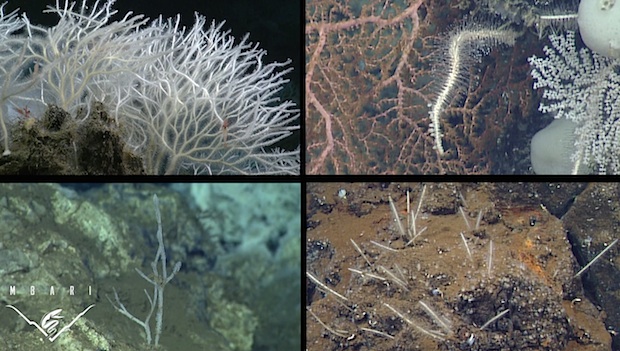The Deep Sea is still full of wonder and unknown creatures with the latest round of newly described sponges being as alien and unusual as one might expect. With nothing much to eat in the deep sea, least of which is the minute picoplankton and bacterioplankton, these newly described deep sea sponges get their nutrition by turning to very unique feeding strategies.
The four new deep sea sponges discovered and described from the depths of the oceans near Monterey Bay are carnivorous, entrapping small copepods and tiny shrimp with microscopic hooks and spines. Despite having no digestive tract to speak of, the carnivorous sponges can mobilize specialize cells to move in an engulf the ensnared prey to derive their sustenance in this very passive aggressive mode of making a living on the near-bottom of the sea.
Since the appearance of all sponges is quite mutable, they are all principally described based on the appearance of their internal silica spines called spicules. What we find particularly fascinating about this group of carnivorous sponges is that spicules resembling these modern species of Porifera have been discovered in sediments as old as 200 million years which indicates that predatory sponges have been entrapping prehistoric sea critters through several waves of Dinosaur successions. [MBARI]



